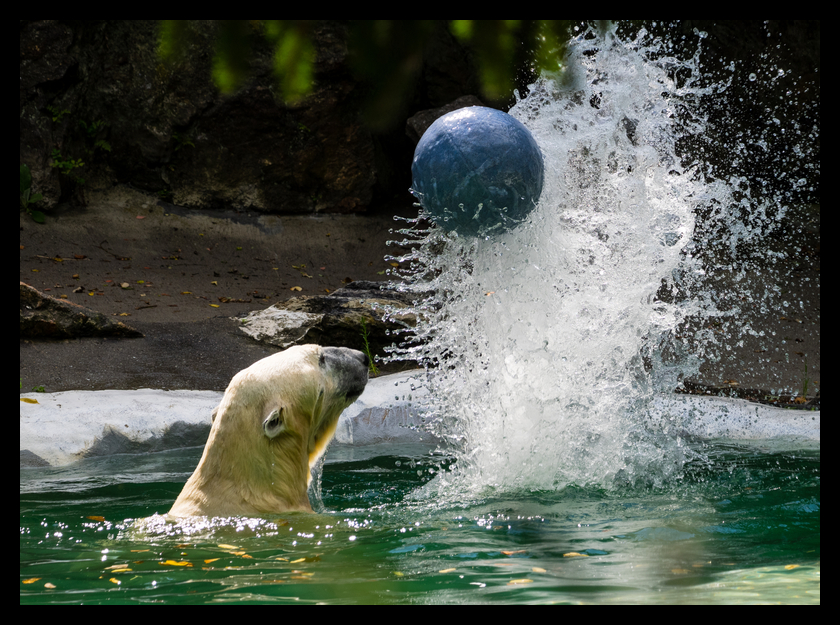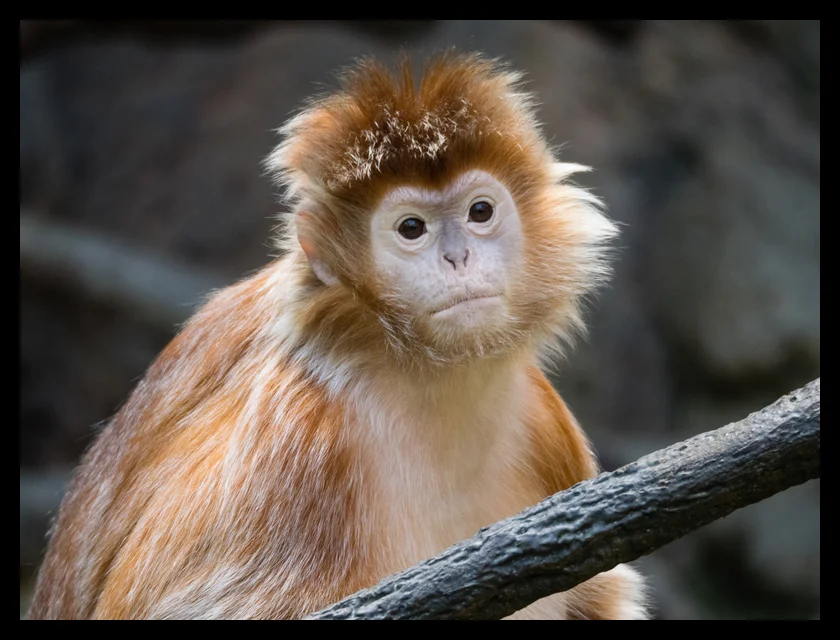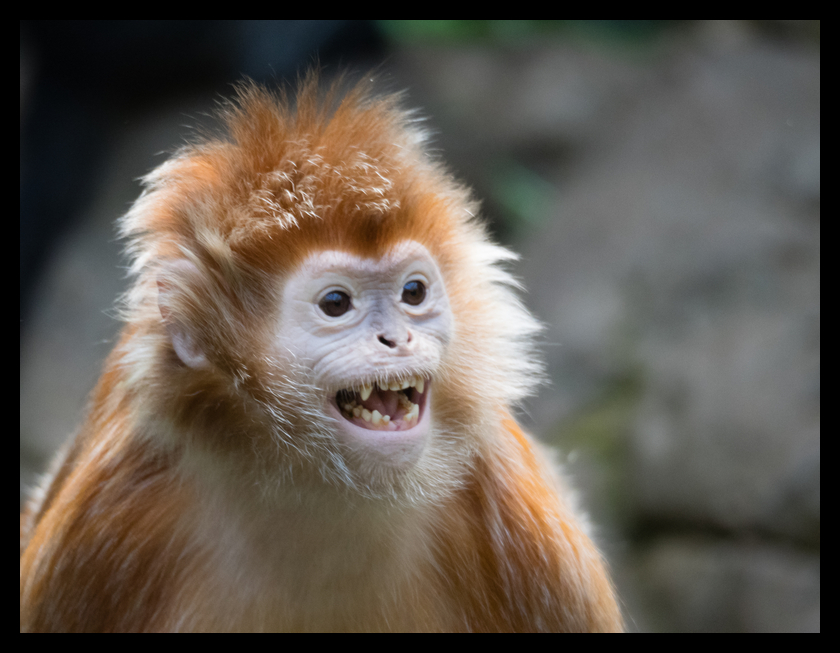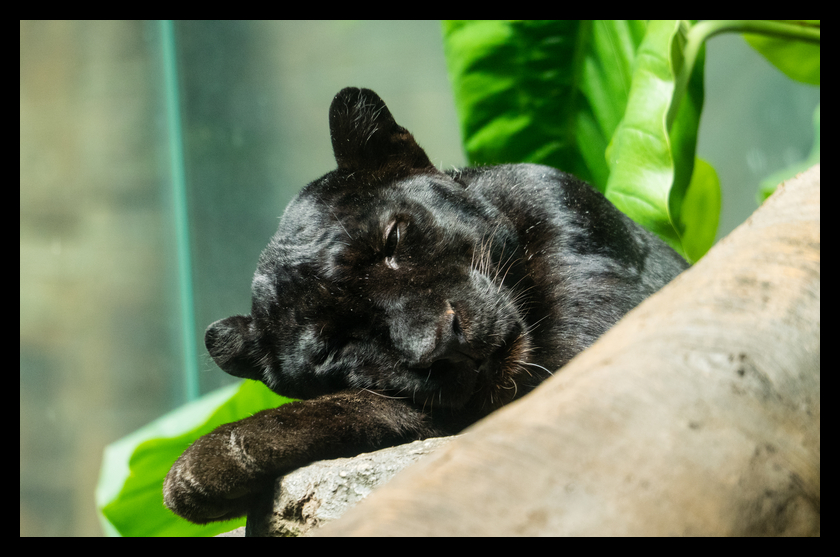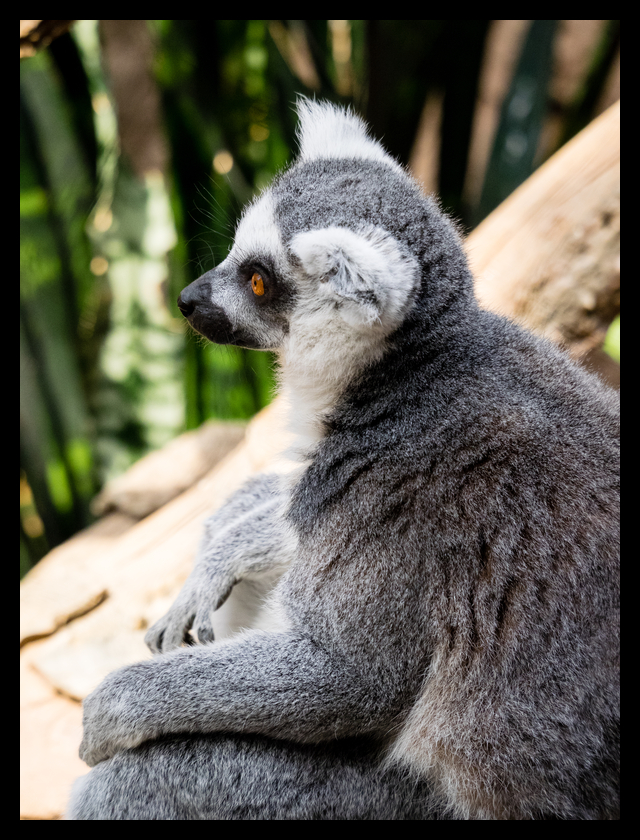Will we ever know who's watching whom in a zoo? Ever since I saw the movie 'Zoo' by Dutch film maker Bert Haanstra many years ago, I cannot escape the feeling that we're just as entertaining for those animals as they are for us.
In the 1961 movie, Haanstra put hidden cameras in the animal cages of Amsterdam's Artis zoo and filmed the interaction between animals and humans with the human visitors pulling faces and generally being silly on the other side of the bars. If there was ever any doubt that we stem from monkeys, the movie does away with it.
It is with this in mind that I visited the Bronx Zoo with my kids a while back. Since 1961, zoos have put more space between people and animals and I'm not even sure to what extent the animals behind the modern glass walls can observe us. Doesn't matter. I still feel that gorilla is watching me as much as I am watching it.
But I got a camera and a long telelens. Ah!
That long telelens in this case was the Olympus ED 75-300mm f/4.8-6.7 II, the equivalent in full frame of a 150-600mm. That's quite some reach. The thing was mounted on an Olympus OM-D E-M1 mirrorless camera. All in all, a relatively small and light package considering the reach it provided.
I'd only consider shooting in a zoo with a telelens. It's the only way to isolate the animals from their surroundings, which even in a modern zoo with relatively large spaces for the animals to roam still abound with signs that this is not their natural habitat.
As ever in a zoo, the challenges are manifold:
other people in the background or in your way;
fences that you need to shoot through;
reflections or dirty handprints and smears on glass;
animals moving fast in unpredictable ways;
a lack of light in some environments.
So, how did it go?
We went on a weekday and entered the zoo from the Asia parking lot, which is smaller than the main lot so you go through the zoo with less of a crowd. That means the number of people that got in the way was relatively limited.
The Bronx Zoo doesn't have many fences in front of its exhibits anymore. Most animals roam in larger areas and are often behind glass instead of fences. Where there are fences with small grids, I opened up my lens, got as close as possible to the fence and hoped the outline of the fence would disappear in the unfocused area of the image. This worked well, generally.
With glass, the challenge is mostly the reflections of yourself and the people around you showing up. To what extent this is a problem depends on how dark the area is that you're standing in, what colors people are wearing and how close you can get your camera to the glass. I don't shoot when I can't prevent the reflections, because the photo becomes worthless. I use my lens hood to get the lens right up to the glass and thus block the reflections. The glass still might lower the contrast of the scene, but you can boost that again in post-processing.
Some animals will barely move. Others will move like crazy. I have no experience shooting wildlife, so trying to deal with fast-moving animals wasn't successful. I also don't think the camera with this lens could have kept up, especially not behind fences or glass and with the animals often half-hidden by branches and bushes that challenge consistent autofocus. I did shoot a lot in bursts, but I do have a lot of images that weren't correctly focused.
Many exhibits are relatively dark, so you're shooting at pretty high ISOs with a long lens. The E-M1 has excellent in-body stabilization, but you still need fast shutter speeds to deal with the animal movements. This again is a challenge to get images that are tack sharp and noise free. Actually, noise is probably the only reason I'd choose a full-frame camera over this Olympus setup. The smaller sensor does show noise at lower ISOs than a full-frame sensor would. At the same time, I doubt I would carry a 600mm lens to the zoo.
Still, this lens isn't totally up to snuff. Image quality gets dicey close to 300mm, so you want to stay a bit shorter than that. And, of course, with the maximum apertures being f/4.8-6.7, you always need quite a bit of light. The upcoming Olympus 300mm f/4 PRO lens will probably solve these issues, but at a price that might well prevent me from buying it.
At 300mm - lacking that touch of sharpness
I did see a few photographers with their Canon DSLRs and 100-400mm zooms. That's what I used last time, some years ago, to shoot in the Bronx Zoo and it was heavy, bulky and I got home with fewer good images than I did this time.
So, in the end, I would recommend the Olympus combo for shooting in a zoo. The range is phenomenal, the image quality often excellent and it's no trouble carrying this package all day.
This is one of a series of ‘Wanderings’ postings about photographing in various locations. Please feel free to add your own experiences in the comments.
By John van Rosendaal
Some more images:




